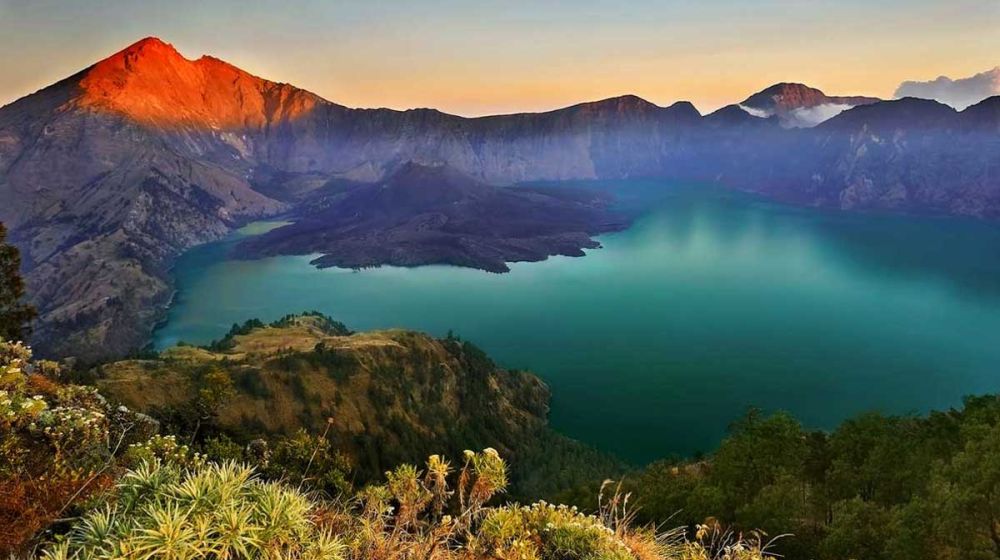

Mount Rinjani, located on the island of Lombok in Indonesia, is an active stratovolcano that has captivated the hearts of adventurers and tourists alike. Its towering presence at 3,726 meters makes it the second-highest volcano in Indonesia, providing breathtaking views and a challenging trek for those who dare to ascend its peaks. The history of tourism at Mount Rinjani is intertwined with the cultural significance it holds for the local Sasak people and Balinese Hindus, who regard the volcano as a sacred place.
The allure of Mount Rinjani's natural beauty began to attract international attention in the early 20th century. However, it wasn’t until the 1980s and 1990s that tourism started to significantly grow. Early visitors were mostly intrepid travelers drawn to the challenging trek and the stunning vistas offered by the mountain and its environs, including the Segara Anak Crater Lake and the hot springs.
In 1997, the Mount Rinjani Trekking Center was established to manage the increasing number of trekkers and to provide facilities and information. This initiative helped to standardize the trekking operations and ensured the safety and comfort of tourists. The region was also declared the Mount Rinjani National Park, recognizing its ecological importance and its potential for ecotourism, which played a further part in its tourism development.
Ecotourism has been a key focus in Rinjani's tourism evolution. Efforts have been made to maintain the delicate balance between accommodating tourists and preserving the natural environment. The Rinjani Trek Ecotourism Program, an award-winning community-based tourism initiative, is one example of how local communities have embraced sustainable practices to benefit from and protect their environment.
Within the last few years, several natural events have shaped the tourism landscape of Mount Rinjani. Notably, the 2018 earthquake in Lombok led to the temporary closure of the trekking routes on the mountain. As these routes have been reopening, there has been a significant focus on improving safety measures and infrastructure to ensure that the Mount Rinjani experience is not only breathtaking but also safe for all visitors.
Modern tourism trends have seen an increase in digital influence, with potential trekkers using online resources for research, bookings, and even sharing their experiences on social media. The inclusion of high-quality accommodation options and travel packages has also made Mount Rinjani more accessible to a wider range of tourists.
Today, Mount Rinjani remains a popular destination for trekking enthusiasts, nature lovers, and cultural explorers. Visitors can trek to the Rinjani summit, relax at the hot springs, fish or swim in the Crater Lake, and enjoy the hospitality of the local Rinjani Lombok communities. As travel trends continue to evolve, Mount Rinjani tourism is expected to adapt, with a persistent emphasis on sustainability and cultural respect.
The history of tourism at Mount Rinjani showcases the transformative power of respectful and sustainable tourism practices. It stands as a testament to Indonesia's commitment to conserving its stunning natural landscapes while sharing them with the world.